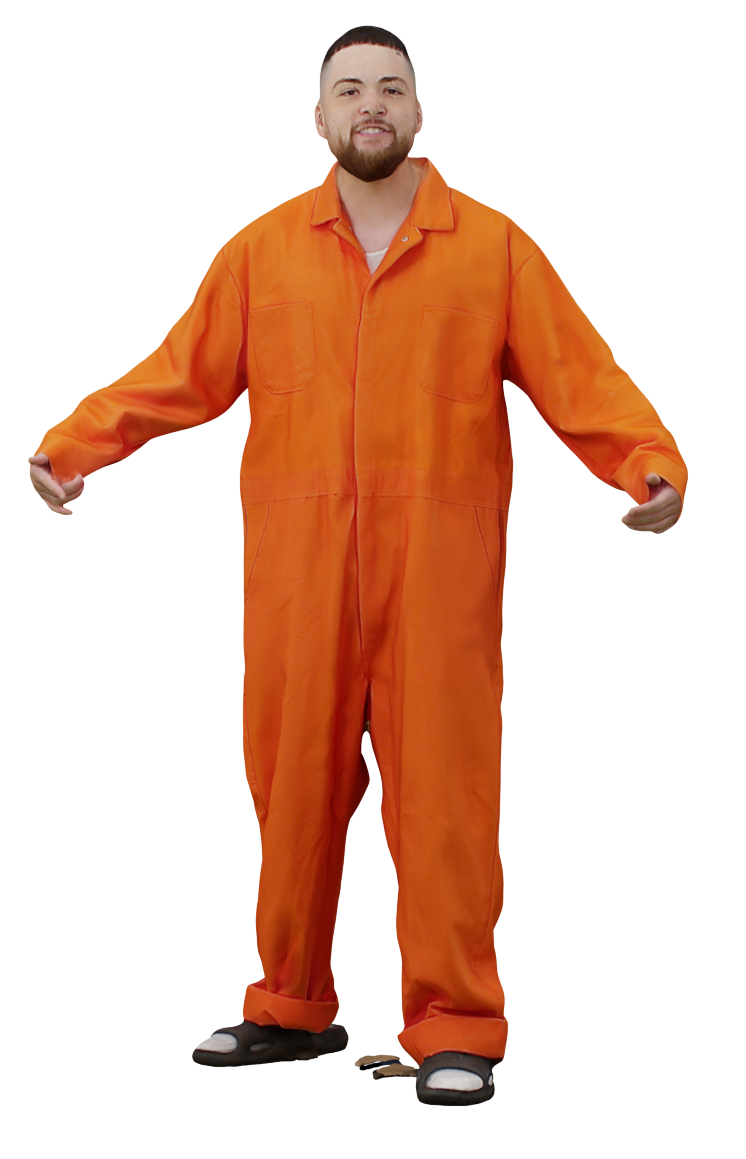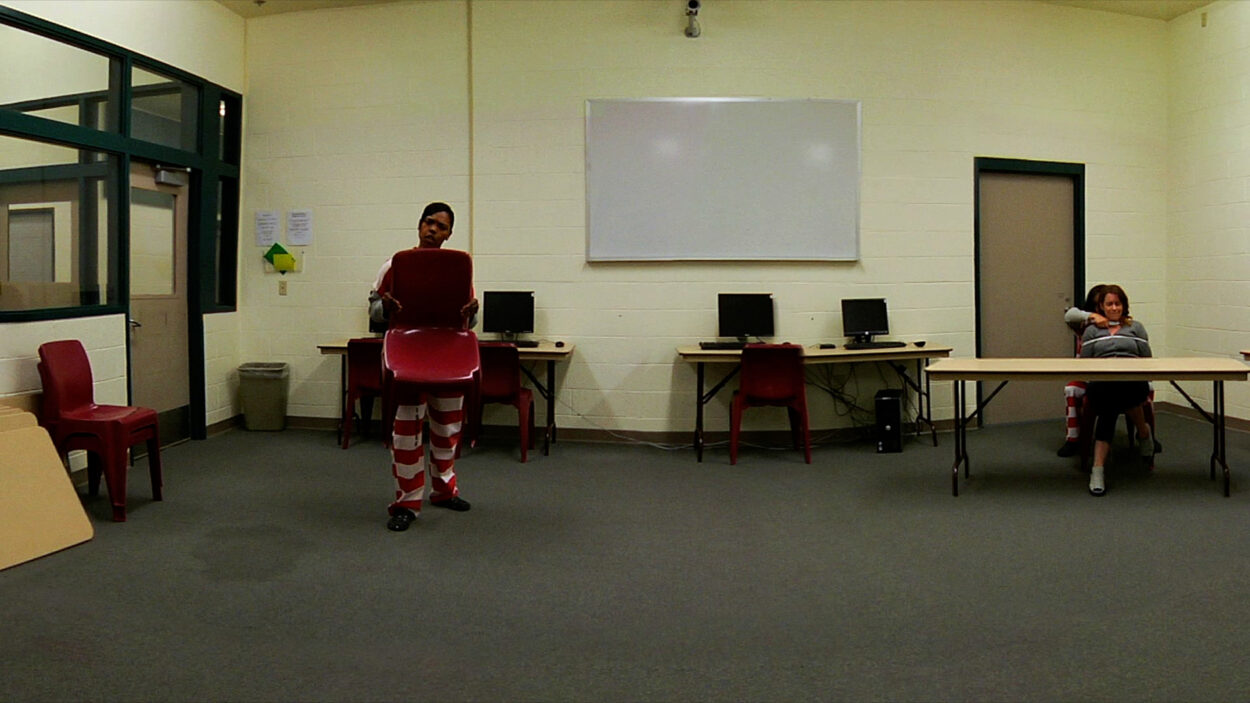
Corrections officers and prison guards face different situations than patrol officers, but they still require effective training to keep themselves and others safe. There are three ways to train the in-custody required skills using VirTra’s research-based simulation training.
Corrections & Jail Assets
By using our Volumetric Capture Studio (V3™), VirTra can capture characters as 3D objects. They can then be inserted into scenarios for either screened or headset-based systems. When using the V-XR® system, characters are displayed in augmented reality. The user can walk around the character and clearly distinguish facial expressions and other subtle visual cues.
The example below depicts an aggressive inmate in an orange jumpsuit. Based on how the user communicates, the subject can either calm down or become further enraged.
Immersive Scenarios
Scenarios such as Teacher’s Pet not only give an option for corrections officers to interact with inmates, but also allow them to practice hostage negotiation. The image below shows the general setting of the scenario with one irate inmate holding a chair and another holding a woman hostage by knifepoint.
Each in-custody scenario has several branching options to resolution. The instructor’s preference or the trainee’s actions can determine how the scenario progresses. Will the subject pull out a gun? Will the hostage taker surrender? All of this depends on how the instructor wants the scenario to evolve or how the trainee communicates.
Additionally, the user can train with all the tools on their belt to make it even more realistic. Sometimes force isn’t needed – but when it is, it is possible to use an ECW device, OC spray, or a firearm.
Scenario Authoring for Custom Content
Want to create your own custom scenarios to suit your agency’s needs? With V-Author®, you can choose from existing panoramic images or take your own panoramic photo to set the scene, then drag and drop characters into the scenario. To create your own in-custody training scenario, there are existing panoramic images that display cells, common areas, and other scenes.
Available Training Solutions for Corrections Officers
Looking for specific training points? Corrections officers can benefit from the following VirTra training solutions:
- Hostage situation
- Mess hall / cafeteria
- Courtroom bailiff
- Active shooter
- Aggressive inmates
- Jail cell
- Escaped prisoner
Want to start corrections and jail training options for your officers with decision-making simulators? Contact a product specialist to learn more about our jail and prison simulators!
Half a continent away, in Kansas City, MO, Patrol Capt. Matthew “Tye” Grant is bringing Force Science education to influential civilians, one grand jury panel at a time.
In cooperation with local prosecutors, Grant, a certified Force Science Analyst and a former KCPD academy supervisor, spends three to four hours with each grand jury in his jurisdiction that is scheduled to pass judgment on an officer-involved shooting. His role: give the jurors an eye-opening and unforgettable immersion in cop reality before they vote on the OISs before them.
“I’m not trying to bias them but to inform them of fundamental truths that critically influence officers’ performance but that most of the jurors and other civilians have absolutely no knowledge about whatsoever,” Grant told Force Science News.
Although Kansas City currently averages about two OISs a month, Grant does not discuss any particular case with the jurors. The information he conveys relates to common deadly force issues–“situations officers typically get involved in and have to make decisions about and things citizens wonder about.”






